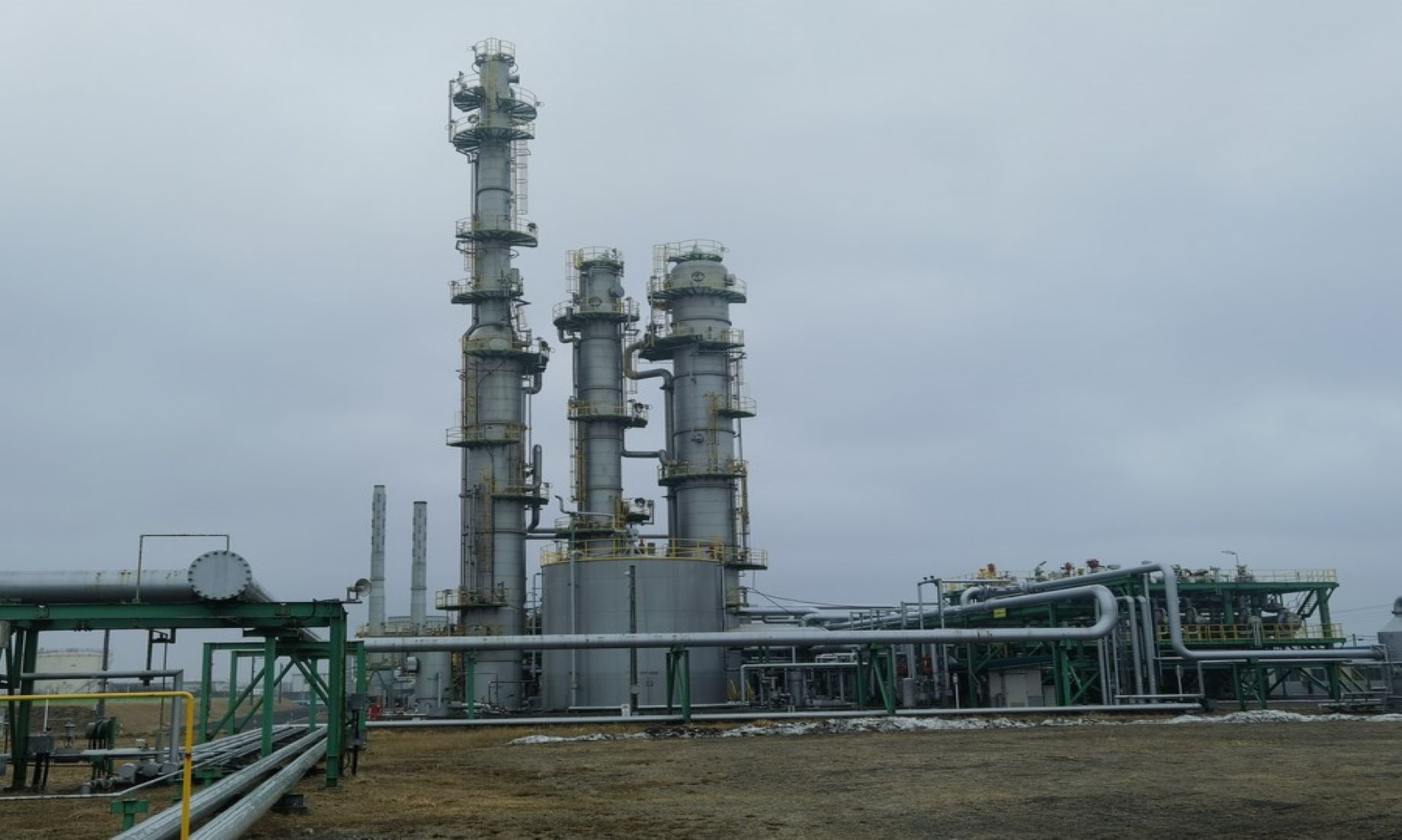TOKYO, Mar 20 (NNN-NHK) – Hokkaido, Japan’s largest prefecture, with an easy access to clean energy sources, such as wind and sunlight, has been stepping up effort, to use renewable energy and curb carbon emissions, in meeting the country’s target of going carbon neutral by 2050.
Tomakomai city, a port located on the southern coast of Hokkaido, facing the Pacific Ocean, in 2012 started testing its carbon dioxide capture and storage (CCS) facility, in order to capture carbon from off-gas, generated by a hydrogen production unit in the adjacent refinery and then compresses the captured carbon dioxide before injecting it into existing underground oil reservoirs.
Official data show that, the CCS facility had stored 300,000 tonnes of carbon dioxide as of Nov 22, 2019, when the injection was terminated, and monitoring work has continued ever since.
According to the Japanese Ministry of Economy, Trade and Industry, the estimated annual storage volume of carbon dioxide in Japan is about 120 to 240 million tonnes per year, by 2050. A survey shows Japan’s offshore area has the potential of storing 16 billion tonnes of carbon dioxide.
Yoshihiro Sawada, general manager of International Affairs Department of Japan CCS Co., Ltd., said, “commercialisation of the CCS facility faces challenges of reducing costs, as well as, lack of laws and regulations for the industry.”
Though being promoted by the Japanese government, the CCS technology does face headwinds from media and some experts, claiming that in principle, this is a great idea, which, unfortunately, in practice helps perpetuate a blind faith in technological salvation, licenses a recklessly cavalier “burn now, pay later” approach, and diminishes the sense of urgency surrounding the need to curb emissions now.
Beside dealing with carbon dioxide that has been produced, Hokkaido is also committed to using clean energy to reduce the generation of pollutant gas from the source.
With an aim of achieving both regional decarbonisation and industrial concentration, Ishikari city established a 100-hectare Renewable Energy Zone in the Ishikari Bay New Port Area, the industrial hub of the Sapporo region, which is home to more than 760 companies and a working population of over 20,000. The zone, powered 100 percent by renewable energy, is the first of its kind in Japan.
In the Ishikari Bay New Port Area, there are 23 wind turbines, one biomass power facility and eight large-scale solar power facilities, generating 300 megawatt of electricity. Meanwhile, a 100-MW offshore wind power plant is being constructed, and is scheduled to be operational this year, and plans for a biomass power plant, using 100 percent domestic chips as raw material, are on the way.
“It is important to consider producing renewable energy, but it is also significant to utilise renewable energy,” said Jun Kato, a local official in charge of promoting renewable energy. So, the region has introduced energy-intensive industries, for example, Kyocera Communication Systems Co., Ltd.
“We aim to provide electricity generated by renewable energy for whole of Hokkaido,” Kato said.
Being the northernmost prefecture, Hokkaido boasts a unique kind of green resource, snow. At Moerenuma Park in Sapporo, snow has been used to cool the landmark structure Glass Pyramid, exposed to sunshine all year round, which serves as an expansive space for rest and relaxation.
The snow stored during winter melts little by little, and around June, when the cooling system is ready to be used, melted water is pumped to the heat exchanger, and air cooled by the heat exchanger is blown inside the Glass Pyramid.
Since the cooling system went into operation in 2004, approximately 1,427 tonnes of snow has been consumed and the amount of carbon dioxide avoided is estimated to reach around 30 tonnes, which is equivalent to 89 years of carbon dioxide emissions by one human being.
In line with Japan’s goal to achieve carbon neutrality by 2050, Prime Minister, Fumio Kishida, announced a Green Transformation plan, to have renewable energy sources provide up to 38 percent of Japan’s total energy by 2030.
With the Japanese government going full steam in broadening the spectrum of renewable energy, there is also growing criticism from local experts that, Kishida’s green plan relies too much on future technological developments, at a time when immediate and serious steps, including reducing the burning of fossil fuels and putting the brakes on deforestation, are needed to tackle climate change.– NNN-NHK






